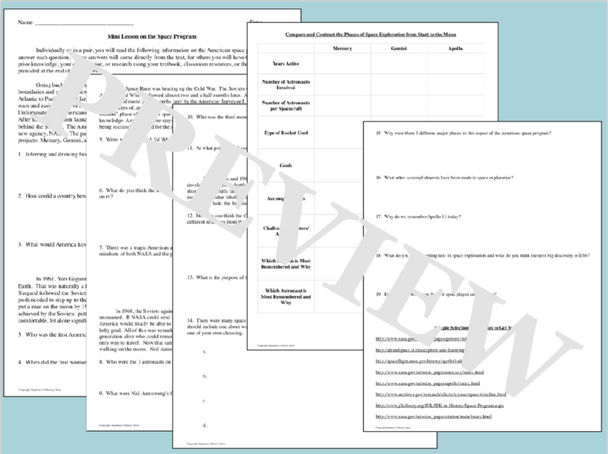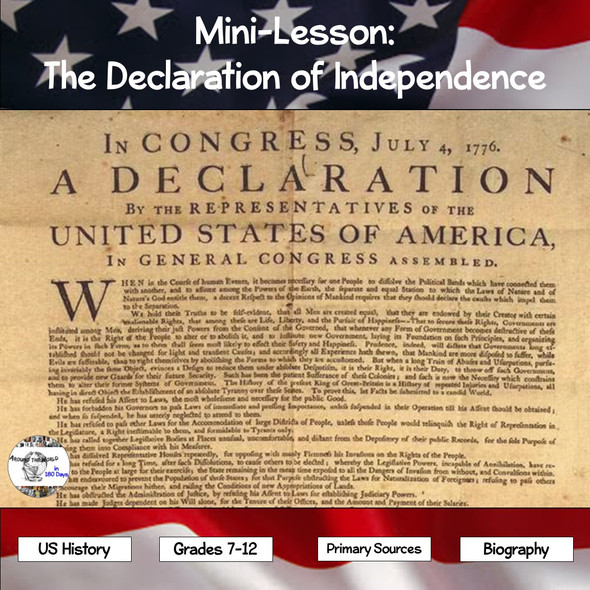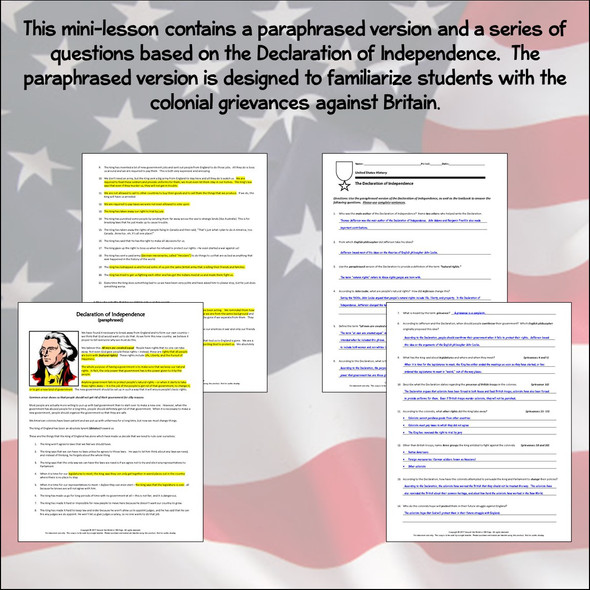Description
Students learn about the American Space Program and NASA's explorations and achievements in this mini lesson. They read 5 paragraphs, answer 19 questions, and complete a graphic organizer. This covers the Mercury, Gemini, and Apollo programs, as well as later aspects of NASA and the space program. The graphic organizer has students compare and contrast 9 aspects of the Mercury, Gemini, and Apollo missions (some academic, some opinion).
The questions are varied in their level of difficulty, and are a combination of being text based, opinion based, and creative. Some require additional research (depending on your curriculum). A selection of websites is provided to give students a starting point to find answers to some of the questions. The answers are included where appropriate.
Sample questions include:
--Inferring from the text, what were some motivations for space exploration?
--When did the first woman make it into space and what was her name?
--Write what you think Ed White’s first thought was when he “walked” in space.
--There was a tragic American accident in January 1967. What was it? How do you think that affected the mindsets of both NASA and the public?
--Who was the third member of Apollo 11? Why is his name less remembered than Armstrong and Aldrin?
--Why were there 3 different major phases to this aspect of the American space program?
--What do you see happening next in space exploration and what do you think the next big discovery will be?
Click here for more resources from Stephanie's History Store














